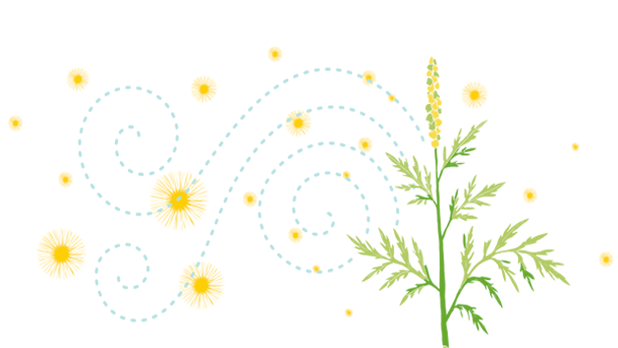1. What it is
You’ll be most affected by weed pollen on dry, windy days when these airborne particles are at their worst.
2. When it is in season
Weed pollen is abundant from late summer to early fall. Warmer temperatures can cause weeds to start producing pollen earlier in the season.1
3. What to watch out for
Ragweed is the biggest troublemaker of all weeds. A single plant can produce a million grains of pollen every day. There are more than a dozen species of ragweed, but it is not the only offender. Other highly allergic species include English Plantain, Lamb's Quarters, Redroot Pigweed, Sagebrush and Tumbleweed.2
4. What to know
Learn to recognize the weeds that trigger your symptoms.
5. What to do
Remove brush and weeds from your property.
Mulch with rocks or plastic gravel to stop weeds from growing.
Protect yourself by learning about the pollen distribution in your area. Ragweed tends to grow in fields and freshly cleared grounds. This puts open and recently deforested areas at risk. The light weight of Ragweed pollen allows it to travel long distances, easily spreading to urban areas.3









